01730 622544

Black Skin Disease in Dogs
Does your dog suffer Black Skin Disease (Alopecia X)?
Alopecia is the medical word for hair loss, originally from the Latin via Greek Alopecia, meaning fox mange. The disease itself, also known as Black Skin Disease, is little understood although it’s becoming more widely known that it’s usually a response by the dog’s body to certain conditions.
This condition in animals is called Alopecia X because the cause(s) of this condition are still relatively unknown and the treatments tend to be by trial and error (or, as some would suggest, random). For example, there’s no standard set of hormone changes associated with black skin disease which could give a straightforward diagnosis. This disease can be easily confused with "Cushing's Disease."
There might be a genetic component to this disease. Being susceptible to contracting it may be part of the specific dog’s genetic makeup. It’s true that some breeds seem more prone to Black Skin Disease than others, with Pomeranians leading the pack. It’s also seen in ‘plush coated breeds’ such as Alaskan Malamutes, Schipperke, Samoyeds, Chow Chows, Keeshonds, miniature and toy poodles, and sometimes dachshunds.
Veterinarians disagree whether or not the dog’s gender plays a role in a dog losing hair. Some argue that it might be a X-linked genetically inherited disorder as, for example, many more male Pomeranians are affected than females. Other vets say whether a dog's male or female is irrelevant. It also seems irrelevant whether or not a dog’s been neutered or spayed. Allergic reactions might also be implicated in black skin disease.
Dog black skin disease manifests initially as thinning hair or bald patches on your dog. There’ll sometimes be itchy skin, sometimes not. Bald patches and blackened, or dark grey, skin then follow. This skin may feel thickened, velvety or have red edges.
Reddened edges may indicate a secondary bacterial or yeast infection. If one of these infections is present, it’ll need to be treated, likely by antibiotics. Eventually, the dog can become completely bald with skin that’s a deep charcoal-grey colour (hyperpigmentation). Often, the dog will also smell really bad.
-> Read more about Black Skin Disease treatments here
What are the Symptoms of Black Skin Disease?
For many dogs with dog Alopecia X, there appear to be no other symptoms, and the disease can be regarded as cosmetic. This is actually the approach many vets will take, suggesting that the dog wear a sweater to prevent getting a chill. The disease could be genetic, however, or rather, the tendency or susceptibility to contracting this disease may be part of the dogs genetic makeup. And it is true that some breeds seem more prone to Black Skin Disease than others, with Pomeranians leading the pack.
Where does Black Skin Disease show on the Skin?
Black Skin Disease can manifest in other ways.
The alopecia hair loss in dogs often begins on the belly and inside the back legs. Patches may also be noticeable on the trunk and areas of normal friction (lower neck, abdomen, hocks, eyes, and ears). Generally, this type of disease is associated with overall itchiness and skin eruptions. A bad odour might be present. A dog’s owner will, quite understandably, think that giving their dog more frequent baths is the answer. However, this just makes the disease worse and the dog even more itchy.
When itching’s present, veterinarians will often prescribe steroids (cortisone or prednisone) to reduce the inflammation. Please note steroids aren’t recommended, as they can disrupt the dog’s natural immune system, resulting in the disease worsening. Further, the use of steroids encourages mange mites and bacteria to move in, with serious results.
Once other causes have been ruled out through skin scrapings and other tests, your vet may also recommend Melatonin as a treatment to encourage hair growth. It only seems to work in 40%-60% of cases and sometimes hair will continue to fall out, even while on it.
Other medication sometimes prescribed is mitotane and trilostane although it’s generally agreed that the risks of these outweigh the benefits as a treatment.
In the very early stages of Black Skin Disease, only small or rusty-coloured dots pepper the skin. You’ll notice them usually on the belly and especially around the genitals and teats.
However, these specks are an early indicator of an infecting agent hard at work, whether it’s fungus (or yeast), bacterium, or follicular mite. These specks mustn’t be ignored. The condition won’t go away by itself and will only get worse with time. It’s usually accompanied by mild, occasional itching which can be irritation for your dog. A single flea bite might be all it’s taken to give rise to this situation. Fleas can inject a number of pathogens just under your dog’s skin.
Zoomadog recommends the Dermagic System to tackle and heal Black Skin Disease
Dermagic is a product range developed by an organic chemist who was motivated to find a solution for her own Yorkshire Terrier who was afflicted with Black Skin Disease. The dog was so badly affected the vets said she must be put down. Dermagic’s approach is to treat the underlying causes of Black Skin Disease rather than just the symptoms (e.g. cortisone steroid injections for itching). The product range is notable for being made of organic, natural components.
To find out how Dermagic can help your dog suffering from Black Skin Disease, watch the short video on Zoomadog’s Dermagic page for the basic info and instructions about the products. Start off by bathing your dog with the peppermint and tea tree shampoo, followed by the peppermint and tea tree oil conditioner. The conditioner can be diluted quite a bit. If you're thinking about budget, an economical solution is to use the award-winning organic Skin Rescue Shampoo bar or the Peppermint and Tea Tree Oil Shampoo Bar, especially formulated for skin problems. These solid shampoos bars are very easy to use and are long-lasting.
Whether using the liquid or bar shampoos, bathe weekly for the first month, then twice monthly or as needed. Do not bathe too frequently as this can exacerbate skin issues.
You’re bathing your dog to ensure that the skin and fur are clean, for the next stage of the treatment, which is the application of the Skin Rescue Lotion to the skin’s surface.
The Skin Rescue Lotion is arguably the most important aspect of the Dermagic system. First, trim the hair over and around the affected areas short, but not shaved. This product must be massaged deeply into the affected areas of the skin twice daily for a week, then once every single day.
Use the product as you would use hand lotion on yourself: not too much, not too little. The skin shouldn’t appear greasy or wet. The lotion penetrates deeply into the follicles where microbes, mites, fungus, and bacteria reside. It targets and kills them all. Keep a t-shirt on your dog to protect the skin and to keep the lotion on the dog and prevent him from licking it off. It won’t harm him to lick it, but it works better if it stays on the skin!
If the hair is very long, please cut it (do not shave) close to the skin. It will grow back. Short hair makes it so much easier to apply the lotion evenly. In a few weeks you’ll start to see growth of fuzzy undercoat, followed by longer out coat growth.
The black skin will begin to fade away.
Excitingly, you’ll start to see pink, healthy skin appear underneath. What’s happening is a complete deep exfoliation, in a sense, shedding the dead outer layers of skin. The process takes some time because all new skin has to grow underneath that black stuff before it can start to slough. This won’t happen overnight. The fungus, or other infecting microbes, has to be killed so that the skin can start to repair itself and rebuild its immunity. This takes some time with this awful disease.
Be patient and persistent. This system will work!
When the skin heals and pink skin has appeared again, it’s now time to use the Cell Restoration Creme on the pink areas. It boosts the cellular immune system and prevents the new baby skin from becoming dry and itchy again, so that the healing process can finish.
For any areas where there is an eruption or broken skin, the Hot Spot Salve is a fantastic product. It’s used to dry up hot spots and localised infections. It’s a much more concentrated version of the Skin Rescue Lotion, with the same ingredients but added lanolin so that it will stick on to the wound and deliver the active ingredients.You only need to apply a dab of this once, again covering with a t-shirt to protect the area.
-> Read more about Black Skin Disease treatments here
Conclusion
Using the Dermagic System to treat your dog’s Black Skin Disease definitely requires commitment, patience, and persistence. But the investment of time is so worth it when you see your dog’s skin returning to normal, hair regrowing, and that it’s obvious your dog’s no longer suffering the discomfort and irritation of persistently itchy skin.

Looking for help with your dog?
We can help find the right solution for your dog
Feel free to give us a call on 01730 622544
or email us at woof@zoomadog.co.uk



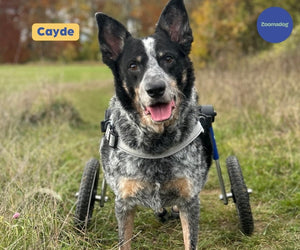
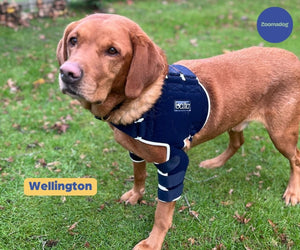
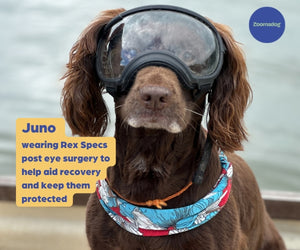


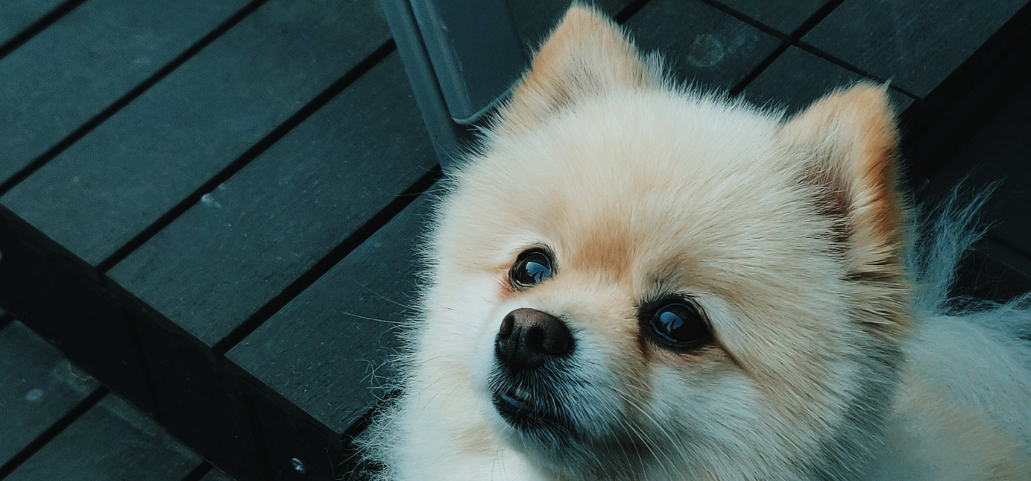
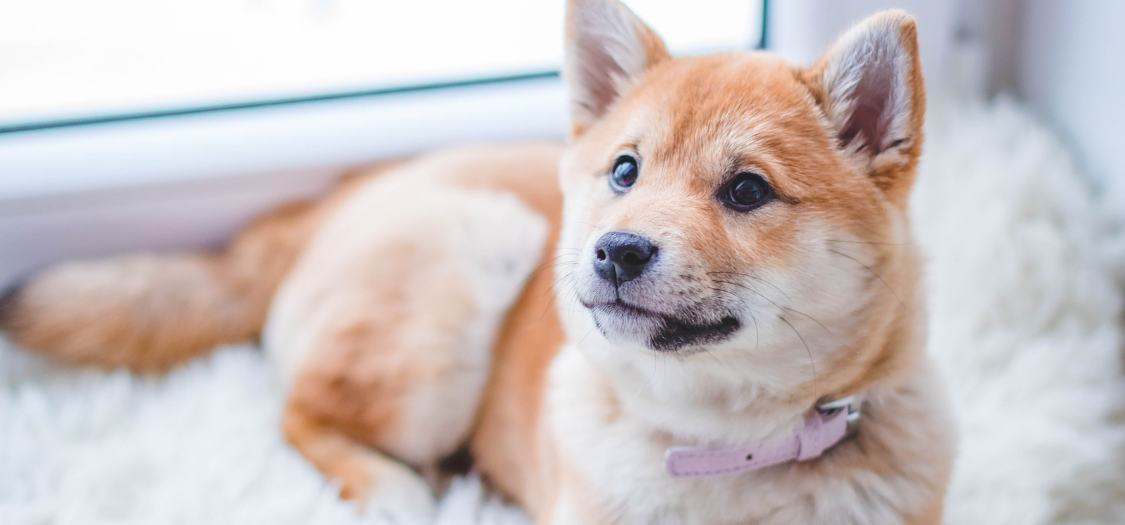

Leave a comment